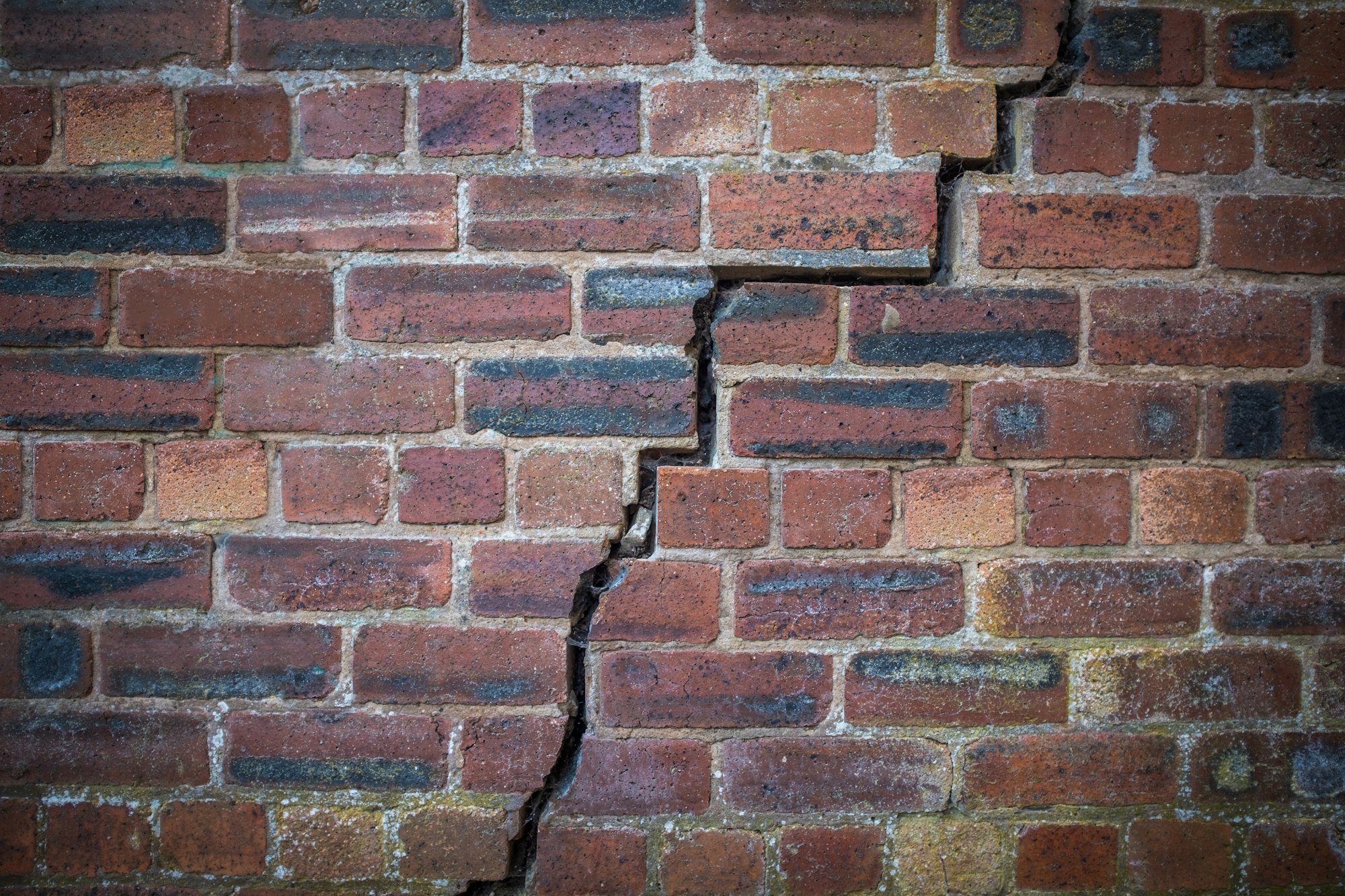The risk of subsidence can pose a significant threat to residential properties, particularly those located in regions with unstable soil types. The term ‘subsidence’ refers to the downward movement of the ground beneath a building, which can lead to serious structural damage. In this article, we are going to guide you through how to evaluate and mitigate subsidence risk in your house or property.
Understanding Subsidence
Subsidence is a naturally occurring process where the ground beneath a property begins to sink. This can lead to an uneven foundation, causing cracks and significant structural damage to the building. Walking through an in-depth quiz on the topic can help you understand the nuances better.
Also to discover : How to Choose the Right Property Management Software for UK Real Estate?
What Causes Subsidence?
The causes of subsidence are complex and varied. Soil type plays a crucial role; certain soil types, such as clay, are particularly prone to shrinking and swelling due to changes in moisture content. This movement can destabilize the foundations of a building, leading to subsidence.
Trees can also contribute to the problem. Their root systems can remove substantial amounts of water from the ground, causing the soil to shrink and the ground to sink.
Additional reading : What Are the Considerations for Converting UK Barns into Residential Properties?
Furthermore, human activities like mining, construction, and changes to the water table can also lead to subsidence.
Signs of Subsidence
Understanding the signs of subsidence is critical in its early detection and prevention. Cracks in the walls, particularly around doors and windows, are a common sign. Other indicators include sticking doors and windows, rippling wallpaper not caused by damp, and cracks appearing in outside brickwork.
Evaluating the Risk of Subsidence
Evaluating the risk of subsidence involves looking at a number of factors. The type of soil your house is built on, the presence of trees, and human activities in the vicinity all need to be considered.
Soil Evaluation
One of the initial steps in evaluating subsidence risk is to understand the type of soil your property is built on. Clay, peat, and other shrinkable soils are particularly susceptible to subsidence. A soil survey can help identify the type of soil and assess its stability.
Tree Risk Assessment
If your property has trees nearby, it’s important to assess their potential impact on the stability of the ground. Older, larger trees can pose a bigger risk due to their extensive root systems.
Historical Subsidence Assessment
Historical records of subsidence in your area can provide valuable insight into the likelihood of future occurrences. Local councils or geological surveys should provide this information.
Mitigating Subsidence Risk
There are several measures that can be taken to mitigate the risk of subsidence.
Underpinning
If a property is showing signs of subsidence, one of the common ways to address the issue is through underpinning. This involves strengthening the foundations to prevent further movement. However, this can be an expensive solution and should be a last resort.
Proper Vegetation Management
Another strategy is to manage the vegetation around your property. This includes regularly pruning trees and shrubs to limit their water uptake, and removing any plants that pose a significant risk.
Regular Property Inspection
Regular inspections can help to identify the early signs of subsidence before they lead to serious damage. It’s recommended to have a professional surveyor check your property, particularly if it’s located in a high-risk area.
Subsidence and Property Insurance
Home insurance policies will often cover subsidence damage. However, these claims can be expensive and may result in higher premiums in the future.
Understanding Your Insurance Policy
It’s crucial to understand what your insurance policy covers when it comes to subsidence. Some policies may not cover damage caused by trees or might have specific requirements for properties built on certain soil types. It’s always worth taking the time to fully understand your coverage.
Claiming for Subsidence Damage
If you need to make a claim, you will generally need to prove that the damage was caused by subsidence and not other factors, such as poor building practices. This will typically involve a survey from a structural engineer.
In conclusion, understanding the risk of subsidence and how to mitigate it is crucial for property owners. By being proactive in evaluating and managing these risks, you can protect your property and potentially save yourself a significant amount of money in repair costs.
The Role of a Structural Engineer in Subsidence Evaluation and Mitigation
The role of a structural engineer extends to both evaluating and mitigating subsidence risk for residential properties. The engineer will carry out a survey to identify any subsidence cracks or signs of uneven ground movement. They can determine whether the building’s foundation is at risk and offer personalised advice on how to manage it.
Subsidence Evaluation
During the evaluation process, the structural engineer will perform a thorough examination of the property. They may use equipment such as ground penetrating radar to search for any changes in the soil’s structure beneath the property. By understanding the property subsidence issues, the engineer can then suggest appropriate mitigation strategies.
Through a comprehensive minute quiz, the engineer can help the property owner understand the various aspects of subsidence better. They will pose probing questions to provide personalised recommendations about your property, which will be followed by a free report detailing the findings and suggestions.
Subsidence Mitigation
In subsidence mitigation, the structural engineer plays an even more critical role. They will oversee the implementation of measures such as underpinning, vegetation management, and regular property inspections. The engineer will ensure that the work complies with all relevant standards and regulations, reducing the risk of further complications.
The structural engineer will also advise you on minor subsidence issues that you can manage yourself, such as maintaining a proper moisture balance in the soil and controlling the growth of trees around your property.
Subsidence and Selling Your House
Subsidence can affect your plans of selling your house, as prospective buyers may be deterred by the potential risks and costs associated with repairing subsidence damage. However, there are ways to manage this and ensure a smooth sale.
Subsidence Disclosures
Honesty is the best policy when selling a house with subsidence. Prospective buyers have the right to know about any past or current subsidence issues. It’s advisable to disclose the details upfront, including any measures taken to mitigate the problem. Having a structural engineer’s report to confirm the stability of the property can instill confidence in buyers.
Subsidence Insurance Claims
If there have been any subsidence claims on your property, these should be disclosed to prospective buyers. This could affect their ability to secure home insurance. Also, provide a clear explanation of what the subsidence insurance covered and any measures taken to rectify the issue.
Seeking Professional Advice
Engaging a property lawyer can be beneficial when selling a house with a history of subsidence. They can guide you through the legal requirements and potential pitfalls, ensuring a smooth and transparent sale process.
Conclusion
Subsidence poses a significant threat to UK residential properties, but with the right guidance and proactive measures, the risk can be managed effectively. A structural engineer plays a pivotal role in evaluating and mitigating subsidence issues, providing reassurances to homeowners and potential buyers alike.
Understanding your subsidence insurance policy is equally crucial, as it can safeguard you against potential financial loss. In the event of selling your house, disclosing all information about past or present subsidence claims and remedial measures undertaken can help ensure a smooth transaction. This comprehensive approach will help you navigate the complexities of subsidence and protect your investment in the long term.












